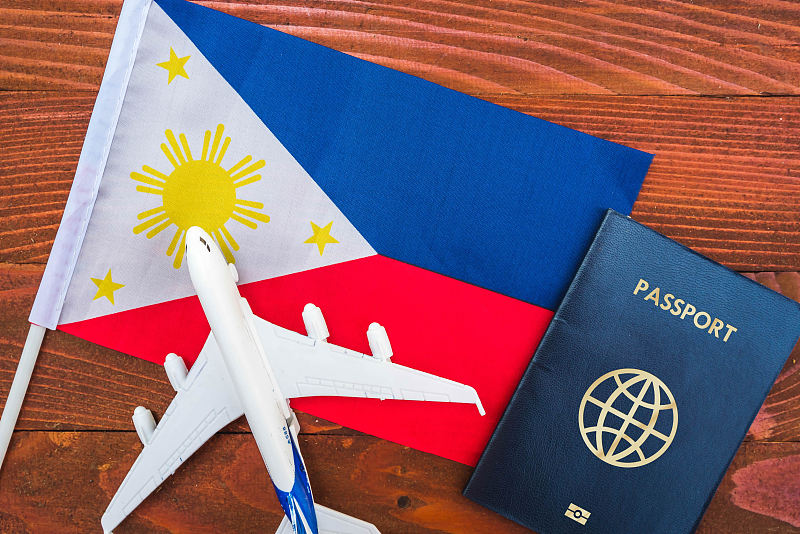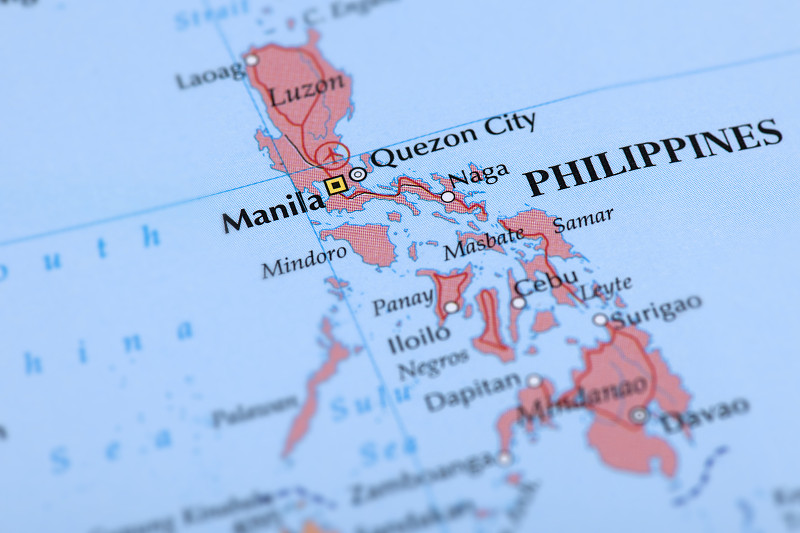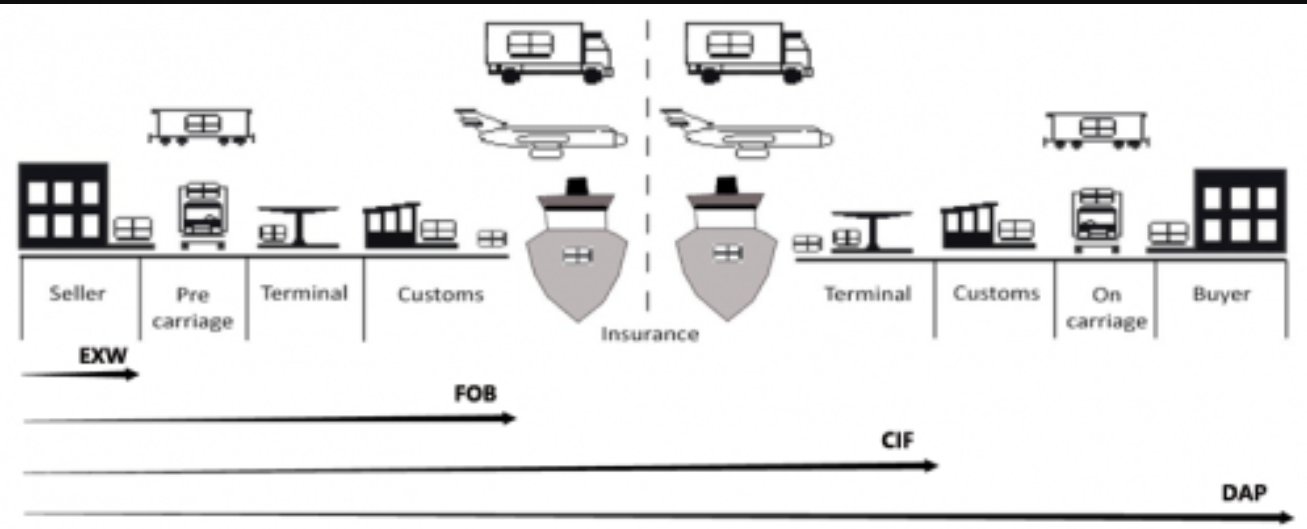Economic cooperation and trade relations between China and the Philippines have a long history, and the geographical proximity and complementarity provide vast opportunities for bilateral trade. China is one of the Philippines' largest trading partners, and trade between the two countries has been continuously growing, covering a wide range of goods and services. In this close economic connection, the transportation of goods from China to the Philippines has become an essential link. The following will focus on the transportation of goods from China to the Philippines, including different modes of transportation, delivery time, and freight costs. Choosing the appropriate mode of transportation is crucial to ensure the safe and timely delivery of goods and is of great significance for further promoting China-Philippines economic cooperation.
What are the transportation modes from China to the Philippines?
Several transportation modes are available for shipping goods from China to the Philippines. The diversity of transportation modes provides flexibility and options to meet different goods' needs and transportation requirements. For speed, cost-effectiveness, or other specific requirements, shipping goods from China to the Philippines can be achieved through sea freight, air freight, courier services, and land transportation. Each mode of transportation has its unique advantages and applicable scenarios, so understanding these different modes of transportation is key to choosing the best option for shipping goods. Let's explore the transportation modes from China to the Philippines to select the optimal solution for goods transportation.
Sea Freight from China to the Philippines
Sea freight from China to the Philippines is an economical and reliable mode of transportation. Through sea freight, goods can be safely transported to ports in the Philippines, and container services provide convenient and efficient transportation solutions.
When goods must be shipped from China to the Philippines, sea freight offers a reliable transportation solution. Generally, the sea transit time from Chinese to Philippine ports is estimated to be around 4 to 14 days. This timeframe includes the loading and unloading of goods, vessel sailing, and unloading processes at the Philippine ports.
Although sea freight takes longer, it has many advantages. Sea freight is suitable for handling large volumes and heavy-weight goods. It is typically applied when the weight of the goods exceeds 500 kilograms or the product volume exceeds two cubic meters. Sea freight also offers lower transportation costs. Sea freight is an ideal choice, especially for large goods that exceed the restrictions of air freight or courier services.
As a leading freight forwarding company serving the Philippines, JIKE Logistics covers all major ports in China, including Shanghai, Ningbo, Shenzhen, Guangzhou, Xiamen, Qingdao, Tianjin, Dalian, and more. With our professional support, you can ensure the smooth delivery of goods to the destination and complete the relevant customs procedures.
Major Ports in the Philippines
| Port of Manila | Port of Cebu | Port of Davao |
| Port of Cagayan de Oro | Port of Iloilo | Port of Legazpi |
| Port of Subic | Port of Tacloban | Port of Bacolod |
| Port of Lakanilaw | Port of Masbate | Port of Palau |
| Port of Polillo | Port of Calamian | Port of Cagayan |
| Port of San Fernando | Port of Baler | Port of San Juan |
Transit Time for Sea Freight from China to the Philippines
| Origin City, China | Manila | Cebu | Batangas | Davao |
| Hong Kong/Shenzhen | 9 days | 10 days | 9 days | 11 days |
| Shanghai | 10 days | 11 days | 10 days | 12 days |
| Ningbo | 10 days | 11 days | 10 days | 12 days |
| Xiamen | 9 days | 10 days | 9 days | 11 days |
| Qingdao | 11 days | 12 days | 11 days | 13 days |
| Dalian | 7 days | 8 days | 7 days | 9 days |
| Tianjin | 12 days | 13 days | 12 days | 14 days |

Air Freight from China to the Philippines
Air freight from China to the Philippines is an efficient, reliable, and globally connected transportation mode. It offers fast transit, wide applicability for various goods, and professional services and security, providing a reliable choice to meet your transportation needs. Regardless of the city of origin in China, goods can quickly reach major airports in the Philippines through direct or transshipment flights. JIKE Logistics follows international transportation standards and safety regulations to ensure the proper protection of goods throughout the transportation process.
If your shipment is less than 2 cubic meters and 200 kilograms or requires urgent delivery, you should choose this transportation mode. Air freight can deliver your goods from factories in China to your destination within a few days. On average, your goods are expected to arrive in approximately 3 working days. The optimal quantity of goods to be sent via air freight is below 500 cubic meters, as it can become costly beyond that.
JIKE Logistics provides comprehensive solutions for air freight from China to the Philippines. We collaborate with major airlines to offer high-quality air freight services, ensuring goods' safe and timely arrival at their destination. Regardless of the size of your shipment, we can tailor the best air freight solution based on your requirements, providing end-to-end tracking and professional customer support to ensure smooth delivery and customer satisfaction.
Major Freight Airports in the Philippines
| Ninoy Aquino International Airport | Clark International Airport | Iloilo International Airport |
| Francisco Bangoy International Airport | Mactan-Cebu International Airport | Laguindingan Airport |
| Mactan-Cebu International Airport | Legazpi International Airport | Davao City International Airport |
| Borongan Airport | Daniel Z. Romualdez Airport | Bacolod-Silay International Airport |
Transit Time for Air Freight from China to the Philippines
| Origin City, China (Airport Code) | Destination City, Philippines (Airport Code) | Air Cargo Transit Time (Business Days) |
| Beijing (PEK) | Manila (MNL) | 1-2 |
| Shanghai (PVG) | Cebu (CEB) | 1-2 |
| Guangzhou (CAN) | Davao (DVO) | 1-2 |
| Shenzhen (SZX) | Clark (CRK) | 1-2 |
| Chengdu (CTU) | Iloilo (ILO) | 2-3 |
| Chongqing (CKG) | Bacolod (BCD) | 2-3 |
| Hangzhou (HGH) | Puerto Princesa (PPS) | 2-3 |
| Nanjing (NKG) | Tacloban (TAC) | 2-3 |
| Wuhan (WUH) | General Santos (GES) | 2-4 |
| Tianjin (TSN) | Zamboanga (ZAM) | 2-4 |
| Xiamen (XMN) | Kalibo (KLO) | 1-2 |
| Qingdao (TAO) | Laoag (LAO) | 2-3 |
| Ningbo (NGB) | Legazpi (LGP) | 2-3 |
| Zhengzhou (CGO) | Tagbilaran (TAG) | 2-4 |
| Xi’an (XIY) | Butuan (BXU) | 3-5 |
| Jinan (TNA) | Roxas (RXS) | 2-4 |
| Shijiazhuang (SJW) | Dumaguete (DGT) | 3-5 |
| Changsha (CSX) | Ozamiz (OZC) | 2-4 |
| Harbin (HRB) | Pagadian (PAG) | 3-5 |
| Kunming (KMG) | Tuguegarao (TUG) | 2-4 |
| Lanzhou (LHW) | Cotabato (CBO) | 3-5 |
| Hefei (HFE) | Dipolog (DPL) | 2-4 |
| Guiyang (KWE) | Surigao (SUG) | 3-5 |
| Nanning (NNG) | Virac (VRC) | 2-4 |
| Fuzhou (FOC) | Catarman (CRM) | 2-4 |
| Yantai (YNT) | San Jose (SJI) | 3-5 |
| Haikou (HAK) | Busuanga (USU) | 2-4 |
| Dalian (DLC) | Naga (WNP) | 2-4 |
| Wenzhou (WNZ) | Masbate (MBT) | 3-5 |
| Changchun (CGQ) | Surallah (SFE) | 3-5 |

Express Delivery from China to the Philippines
Express delivery services are usually suitable for small, lightweight goods such as documents, samples, and small commodities. It provides fast transit times and door-to-door delivery services, enabling businesses and individuals to engage in cross-border transactions conveniently.
Chinese express delivery companies have extensive network coverage and efficient logistics systems to ensure timely and secure delivery to the Philippines. By partnering with local express delivery services in the Philippines, Chinese express delivery companies can provide a complete transportation chain, from pickup, packaging, and customs clearance to final delivery services.
Transit Time for Express Delivery from China to the Philippines
Express delivery services are a relatively fast mode of transportation, typically taking a few days to a week. The specific transit time depends on the weight, volume of goods, and the distance between the origin and destination. Major cities in China, such as Beijing, Shanghai, Guangzhou, have express delivery companies offering services to the Philippines, and international express companies have agents and branches in China.
Express delivery is the best choice if you need urgent and fast delivery. It is a relatively straightforward mode of transportation that can deliver goods to your doorstep within 2-5 working days. Express delivery suits goods smaller than one cubic meter or 200 kilograms.
Using express delivery services such as FedEx, UPS, DHL, and TNT, the delivery time from China to the Philippines is approximately 3 working days. It is important to note that express delivery services often come with higher prices and rates than other transportation modes. Additionally, during holidays and peak periods, express delivery fees may increase. Therefore, factors such as transit time, goods weight, and cost must be considered when choosing express delivery services.
Door-to-door shipping from China to the Philippines
Door-to-door shipping from China to the Philippines is a convenient method of transporting goods that provides end-to-end service, from the origin to the final destination.
The door-to-door shipping process typically includes the following steps:
l Contact JIKE Logistics and provide detailed information about the goods, such as weight, dimensions, and destination. We will then arrange to pick up the goods from your specified location and perform the necessary packaging and labeling.
l The goods will be transported to the Philippines using the appropriate mode of transportation, which can be air freight, sea freight, or land transportation, depending on the nature of the goods, urgency, and budget requirements.
l Before the goods reach the Philippines, the logistics company will handle all necessary documentation and customs procedures, including customs clearance, payment of duties and taxes, and processing relevant import permits.
l Finally, once the goods arrive at the destination in the Philippines, JIKE Logistics will be responsible for delivering the goods to your specified delivery address, completing the entire door-to-door shipping process.
Door-to-door shipping offers a seamless, secure, and efficient transportation solution, eliminating the need to worry about multiple steps. By choosing a reliable logistics partner, you can ensure that your goods are safely transported to the Philippines and delivered according to your requirements and schedule.
Shipping fees from China to the Philippines
Shipping fees from China to the Philippines depend on multiple factors, including the weight, volume, mode of transportation, distance between the origin and destination, and the chosen logistics service provider.
For sea freight and air freight, charges are typically based on either the weight or the volume of the goods, with the higher value of the two being used for billing. Fuel surcharges, customs duties, and clearance costs may also influence shipping fees.
For express services, shipping fees are usually calculated based on factors such as the goods' weight, dimensions, and destination. International express companies typically provide online calculators where you can input relevant information to obtain an estimated shipping fee.
Specific fee rates and prices may vary among different logistics service providers. It is recommended to contact several logistics companies or freight forwarders, provide detailed information about the goods, and request accurate quotations and cost estimates.
Additionally, it is important to note that specific seasons, holidays, or other factors may impact shipping fees. Therefore, when planning the transportation of your goods, submit your quote request, and our professional team will quickly calculate the accurate shipping fees for you.

Volumetric weight calculation rule
The volumetric weight calculation rule determines the shipping cost of goods, considering both the volume and weight factors. This rule is commonly used in air freight and express services.
In international cargo transportation, the chargeable weight of the goods may be greater than the actual weight or the volumetric weight.
Actual weight refers to the physical weight of the goods, usually measured in kilograms (kg).
Volumetric weight is a virtual weight calculated based on the volume of the goods to ensure optimal utilization of transportation space. The calculation of volumetric weight is typically based on the following formula:
Volumetric weight (kg) = Length (cm) × Width (cm) × Height (cm) / 5000
In the volumetric weight calculation formula, the divisor 5000 is a conversion factor determined by standards and may vary among different logistics companies or modes of transportation. This factor converts the measurement unit of volume into kilograms.
In actual cost calculations, the goods' actual weight and volumetric weight are compared, and the higher value is used as the chargeable weight. Shipping costs are typically calculated based on the chargeable weight.
What is the cheapest way to ship from China to the Philippines?
The cheapest way to ship goods from China to the Philippines is usually through sea freight. Sea freight offers an economical transportation solution suitable for large quantities and heavy goods. Compared to air freight and express services, sea freight has lower transportation costs, helping you reduce the overall shipping fees.
However, it is important to note that sea freight has a relatively longer transit time, typically taking several weeks to transport goods from ports in China to ports in the Philippines. Therefore, if your goods have urgent delivery requirements, you may need to consider other faster transportation options, such as air freight or express services.
Furthermore, the key to reducing shipping fees is comparing quotes and services from different logistics companies, flexibly scheduling shipment dates and selecting appropriate packaging methods. By planning and optimizing the logistics process effectively, you can find the most cost-effective shipping method while ensuring your goods' safe and timely delivery.
Import duties and taxes in the Philippines
Import duties and taxes in the Philippines are determined based on factors such as the type of goods, value, and other relevant considerations. Here are some basic details about import duties and taxes in the Philippines:
Customs Duties: The Philippines imposes customs duties on imported goods, and the duty rates depend on the classification of the goods and international trade agreements.
Duty rates can be a specific amount or a certain percentage of the value of the goods.Value-Added Tax (VAT): The Philippines levies a 12% value-added tax on most goods and services. VAT is calculated based on the retail price of goods or the value of services provided.
Import Taxes: Certain specific goods may require payment of additional import taxes, such as tobacco, alcohol, automobiles, etc. The import tax rates vary based on the type and value of the goods.
Special Taxes and Additional Taxes: The Philippines may impose special or additional taxes on specific goods, such as tobacco excise tax, alcohol surcharge, etc. These taxes are levied in addition to other taxes and may vary based on the type of goods and specific requirements.
It is worth noting that customs and tax regulations can be subject to adjustments and modifications based on the policies and regulations of the Philippine government. Therefore, it is advisable to consult with Philippine customs or professional logistics companies for the latest information on customs duties and taxes before engaging in import operations, ensuring compliance with relevant regulations and requirements.
Understanding Terms: FOB, EXW, CIF, and DAP
When it comes to international trade and logistics, here are explanations of several commonly used trade terms:
FOB (Free On Board): FOB refers to the seller delivering the goods to the designated port of shipment and bearing the cost and responsibility of loading the goods onto the vessel. Once the goods are loaded onto the vessel, the responsibility transfers to the buyer, including transportation costs and risks.
EXW (Ex Works): EXW means the seller prepares the goods and makes them available to the buyer at a specified location (typically the seller's factory or warehouse). Under EXW terms, the seller's responsibility is limited to preparing the goods and making them available for the buyer to pick up, with all costs and risks the buyer bears.
CIF (Cost, Insurance, and Freight): CIF includes the seller's responsibility for the goods cost, insurance, and freight until they are delivered to the destination port. The seller is responsible for arranging transportation and purchasing insurance, but after the goods arrive at the destination port, the risks and costs transfer to the buyer.
DAP (Delivered At Place): DAP means the seller delivers the goods to the buyer's specified destination, excluding import clearance procedures. The seller is responsible for delivering the goods to the destination and bears the transportation costs and risks. Still, the buyer is responsible for arranging import clearance procedures and paying related fees.
These terms are used to specify the delivery conditions and division of responsibilities for goods in international trade. For specific trade transactions, sellers and buyers can choose the appropriate terms to clarify their responsibilities and obligations. It is important to have a clear understanding and explicit agreement on these terms when engaging in international trade to avoid misunderstandings and disputes.

What cannot be shipped from China to the Philippines?
Drugs and prohibited substances: Any form of drugs, prohibited substances, and related items and equipment are strictly prohibited from transportation.
Weapons and military equipment: This includes firearms, ammunition, explosives, military equipment, and related components.
Prohibited and dangerous goods: This includes flammable, explosive, toxic, corrosive, or radioactive substances such as chemicals, gases, liquids, solids, etc.
Counterfeit and infringing goods: Unauthorized brand imitations, counterfeits, or goods that infringe intellectual property rights are prohibited from transportation.
Animals and plants and their products: According to the Philippines' agricultural and animal and plant quarantine regulations, some animals, plants, and their products may be restricted or require special permits.
Food and drugs: Certain foods and drugs may require special permits, inspections, or labeling to ensure compliance with the Philippines' food safety and drug regulatory requirements.
Conclusion
There are various options available for shipping goods from China to the Philippines, including air freight, sea freight, express services, and door-to-door services. Choosing the appropriate mode of transportation that suits your needs can help reduce costs, shorten transit times, and ensure the safe arrival of goods at the destination. Additionally, understanding the import regulations, customs duties, and tax policies in the Philippines is crucial to complying with the relevant regulations and minimizing potential issues during shipping. By choosing JIKE Logistics, you can expect professional support and services to ensure a smooth delivery of your goods to the Philippines and a hassle-free customs clearance process.
FAQs
| Q: Should I choose a Chinese freight forwarder or a Philippine freight forwarder? |
| A: In the process of shipping from China to the Philippines, you should choose a Chinese freight forwarder. Chinese freight forwarders have more experience in the transportation processes and document preparation in China and can provide more accurate and convenient shipping solutions. |
| Q: How can I import to the Philippines duty-free? |
| A: To achieve duty-free importation to the Philippines, you must comply with the relevant Philippine regulations on duty-free imports. This may involve meeting specific import purposes and conditions, obtaining the necessary import permits, certificates, or exemptions, and adhering to relevant laws and procedures. It is best to consult with local customs or relevant agencies to understand the detailed requirements and procedures for duty-free imports. |
| Q: What documents are required for shipping by sea from China to the Philippines? |
| A: The documents required for shipping by sea from China to the Philippines may vary depending on the nature of the goods and the shipping requirements. However, commonly required documents include the commercial invoice, packing list, bill of lading or sea waybill, certificate of origin, and any specific import permits or licenses required. It is recommended to consult with your freight forwarder or shipping agent for a comprehensive list of required documents based on your specific shipment. |
| Q: What goods can be imported from China to the Philippines? |
| A: A wide range of goods can be imported from China to the Philippines, covering many industries and sectors. This includes but is not limited to electronics, clothing and textiles, household items, construction materials, machinery and equipment, cosmetics, food and beverages, and more. The specific list of goods will be subject to Philippine import policies, regulations, and standards, so it is advisable to consult with local customs or relevant agencies to understand the specific import restrictions and requirements for goods. |


Consult Our Experts